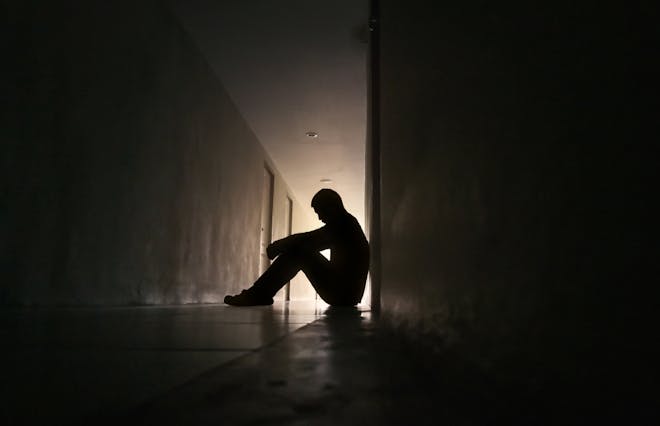Understanding Harmful Habits: The Psychology Behind Our Actions



November 30, 2023
Related Event

Related Event
Let’s Experience: Cultivating Mindfulness to Transform Unhealthy Habits
Unraveling the Complexities of Addiction and its Impact
Addiction, a term often shadowed by misconceptions and stigma, is, in reality, a complex and multifaceted issue that impacts not only individuals but also the communities they inhabit.
Defined broadly as the inability to stop using a substance or engaging in a behavior despite detrimental consequences, addiction encompasses a range of behaviors and substances, from alcohol and drugs to gambling and technology.
In our commitment to shedding light on the complexities of addiction, it's important to approach the statistics with empathy and an open heart. These numbers are not just data; they represent individuals, families, and communities navigating the challenging journey of addiction:
Almost 21 million Americans have at least one addiction, yet only 10% of them receive treatment.
About 25% of people who use illicit drugs develop an addiction.
24% of people who have a drug disorder have an Opioid use disorder.
About 9.5 million Americans who have a substance use disorder also have a mental illness.
More than 70% of people who tried an illegal drug before the age of 13 have an addiction to alcohol or drugs.
Americans between the ages of 18 and 25 are most likely to use addictive drugs.
Yet, addiction is not just a personal struggle; it ripples through families, friendships, workplaces, and communities, often leaving a trail of emotional, financial, and social challenges. As such, understanding addiction's comprehensive impact is crucial in addressing it effectively.
Moreover, community support emerges as a cornerstone in the healing and recovery journey. The sense of belonging, understanding, and shared experiences within a community can significantly bolster the resilience and recovery of those battling addiction.
This blog post aims to explore how community support plays a crucial role in addressing addiction, offering a beacon of hope and a pathway to recovery, including:
Understanding Addiction: Gain insights into the nature of addiction, its causes, and its wide-reaching effects on individuals and their communities.
The Role of Community in Recovery: Discover how community support, from group therapy to support networks, can be a game-changer in the journey toward healing.
Empowering Action: Learn about the steps that individuals, families, and communities can take to foster recovery and create environments conducive to healing and grow
Triggers and Vulnerabilities
Emotional, environmental, and social factors can heavily influence our behaviors, sometimes leading to the development of harmful habits. Emotional triggers may include stress, anxiety, or depression, which push individuals towards activities that offer temporary relief but may be detrimental in the long run.
There is a significant correlation between stress and increased susceptibility to forming habits like smoking. Environmental triggers encompass aspects like accessibility to substances or engaging in activities that are culturally or socially normalized despite their potential harm. Social triggers often involve peer pressure or the desire for social conformity, which can persuade individuals to adopt certain behaviors to feel accepted.
Personal vulnerabilities such as a history of trauma, low self-esteem, or previous negative experiences can also predispose individuals to habit formation. The American Psychological Association discusses how these vulnerabilities, combined with external stressors, can increase the risk of developing harmful habits as coping mechanisms.
The Vicious Cycle of Addiction
Addiction, a particularly severe form of harmful habit, creates a compulsive need in individuals to engage in detrimental behaviors despite being aware of their negative consequences. It's a cycle that typically starts with a voluntary act of taking a substance or engaging in a behavior, and over time, the ability to choose to stop can become compromised.
The cycle of addiction encompasses various stages, each with distinct psychological and physiological changes.
Initiation: Often beginning with experimentation in response to curiosity or peer pressure.
Regular Use: The substance or behavior becomes a regular part of the person's routine.
Risky Use/Abuse: The individual starts to suffer legal, social, and health consequences.
Dependence: The user develops a tolerance, needing more to achieve the same effect, and may experience withdrawal symptoms without it.
Addiction: The individual is unable to stop the behavior, even when they want to, despite severe consequences.
The National Institute on Drug Abuse outlines how these stages are influenced by a combination of genetic, environmental, and behavioral factors, creating a complex web that entangles the individual. Here are some critical points to consider about the cycle of addiction:
Neurological Impact: The brain's reward system is altered, leading to cravings and compulsive behavior.
Physical Dependence: Over time, the body may require the substance or behavior to function normally.
Emotional Toll: Feelings of guilt, shame, and helplessness often accompany the deeper stages of addiction.
Addressing addiction effectively requires an understanding of its cyclical nature and the acknowledgment that it's not simply a matter of willpower. Treatment often necessitates a multi-faceted approach that includes medical intervention, psychological support, and lifestyle changes.
Breaking Free: Strategies for Change
Overcoming harmful habits often involves a combination of self-help strategies and professional support. Cognitive-behavioral techniques are particularly effective, as they address the underlying thoughts and feelings that contribute to harmful behaviors. Cognitive-behavioral therapy (CBT) can significantly reduce the recurrence of harmful habits by altering thought patterns and developing coping strategies.
Cognitive Restructuring: This involves identifying and challenging negative thought patterns that fuel harmful habits, replacing them with more balanced and constructive thoughts.
Behavioral Modification: Techniques such as self-monitoring and reinforcement can help individuals gradually reduce or eliminate their harmful behaviors.
Relapse Prevention: Developing a plan to deal with potential relapses is essential for long-term change. This includes identifying high-risk situations and creating strategies to avoid or manage them effectively.
The role of therapy extends beyond individual sessions. Group therapy can offer a support system and a sense of community, which is crucial for sustaining change. The American Psychological Association highlights the importance of social support in behavioral change, noting that individuals with a strong support network have better outcomes in breaking free from addiction.
Furthermore, support systems don't just include therapy groups. They can also come from friends, family, and even online communities. These networks provide encouragement, advice, and a listening ear, all of which are invaluable resources on the journey to change.
Professional Help: Therapists can provide personalized strategies and support for individuals looking to break free from harmful habits.
Community Support: Support groups and community resources can offer a collective experience that reinforces personal efforts and provides a platform for sharing success stories and challenges.
Holistic Approaches: Incorporating lifestyle changes such as diet, exercise, and hobbies can complement therapeutic strategies and contribute to overall well-being.
Embracing these strategies requires courage and commitment, but the path to change, although challenging, is one that leads to a more fulfilling and empowered life.
Embracing the Journey to Positive Change
The path to change is not a solitary one. It is enriched and supported by the presence of therapists, support groups, and the caring individuals in our lives. For anyone standing at the crossroads, eager to break the cycle of harmful habits, know that it's a sign of strength to reach out for help. Professional guidance can illuminate the path forward, providing the tools and support needed to make lasting changes.
As you contemplate the steps to take, here are some key reminders:
Self-Compassion: Be kind to yourself during this process. Change is hard, and setbacks can happen. Treat yourself with the same understanding and patience you would offer a good friend.
Active Participation: Engage actively in the change process. Use the strategies that resonate with you, and be open to trying new approaches.
Seek Support: Don't hesitate to seek professional help. Therapists and support groups can provide invaluable guidance and support.
Stay Informed: Educate yourself about the psychological aspects of habit formation and change. Knowledge is power, and understanding the 'why' behind your habits can empower you to address them effectively.
Plan for the Future: Develop a clear plan for how you will manage triggers and vulnerabilities moving forward. Having a plan can make you feel more in control and less vulnerable to relapse.
Resources abound for those who are ready to embark on this transformative journey. Whether through online platforms, local community centers, or mental health professionals, support is available. Remember, changing harmful habits is not just about breaking free from past behaviors; it's about opening up to a future where you are in control, one where your actions align with your values and aspirations.
Related Event


